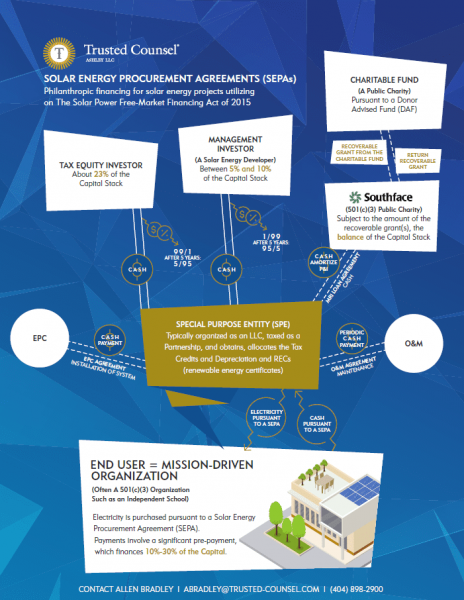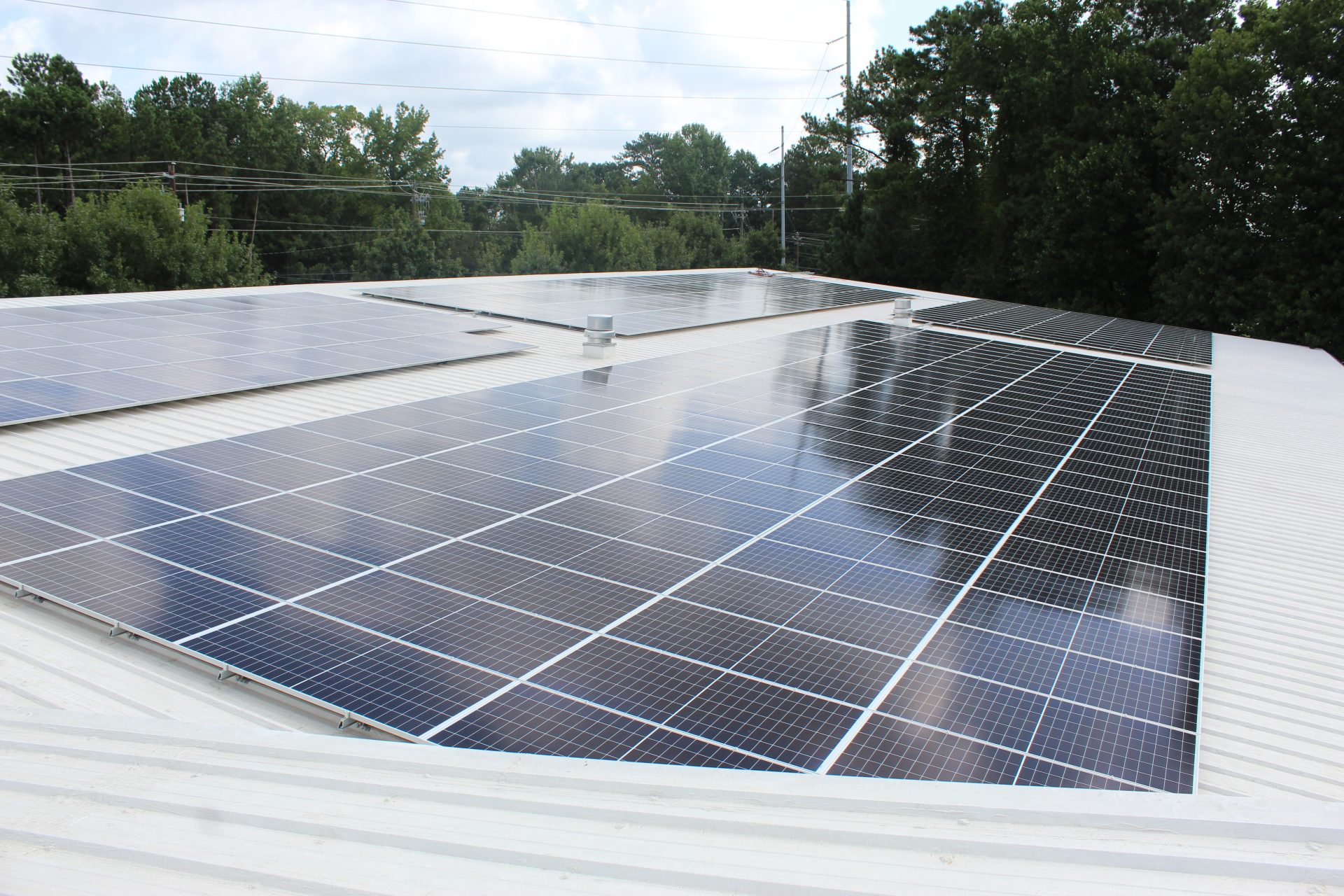On a hot, humid September day, dozens of students, teachers, well-wishers and project participants gathered outside The SAE School in Mableton. The occasion was to celebrate a ribbon-cutting of the school’s new solar array, an installation that puts The SAE School on its way to becoming the first 100% solar-powered school in Georgia. Its path to get there is unique, but it’s one that could soon be adopted by more schools and nonprofits in other states.

“For years many nonprofits have had the goal of reducing their environmental impact and moving toward clean energy, but obtaining the capital to do it has often been a hurdle because of the need to support mission-driven objectives first,” says Barry Coates, Chief Financial Officer for Southface Institute. “Through a combination of charitable grants and private investment and taking advantage of several recent legislative innovations, it’s now easier for nonprofits to move to 100% clean energy and significantly reduce their overall energy costs and carbon emissions, preserving funds for mission-critical work,” he says.

Innovative Funding for Solar
The SAE School project represents a pioneering partnership between nonprofits and funders to leverage legislation for Solar Energy Procurement Agreements (SEPA’s) and federal tax credits that help promote solar energy. In order to take advantage of these components, an entity was established to fund the solar project through the backing of a broad group of supporters that includes Southface’s GoodUse program, The Bill and Melinda Nussey Foundation, Allen Bradley of Trusted Counsel and Monarch Private Capital. A SEPA was put in place between the entity and The SAE School.
The SEPA provides for the sale of electricity generated through the solar project to The SAE School at a rate that allows a savings of approximately $15,000 a year in utility costs. After approximately 10 years, the school will have the option to purchase the solar infrastructure and therefore almost eliminate their cost of electricity for the remaining life of the project.
The Impact of Solar Savings
In its eighth year of operation, The SAE School, named for its focus on science, art and entrepreneurship, is home to 200 students, preschool through eighth grade. Keeping tuition low was one of the private school’s founding principles and has allowed it to keep costs around half of other metro Atlanta schools and host a diverse community with an 85% minority student body. Its plan to become net-zero, where the amount of greenhouse gas produced and the amount removed from the atmosphere are balanced, and 100% solar goals also fit with the school’s philosophy to teach students awareness of their environment. In addition to community work and learning sustainable best practices, students can monitor their school’s net-zero efforts via a real-time digital monitor in the school’s lobby.
Scott Starowicz, Chief Financial Officer of The SAE School, explains that the move to 100% solar will create far greater capacity for school operations:

“The SEPA lease is for 10 years, so we will save an average of $15,000 per year or $150,000 over a 10-year time period. That’s a significant amount of money for us—equivalent to the salary of about three teachers,” Starowicz says. “After that 10-year time period, we will then save about $30,000 per year so throughout our school’s life it will save a ton. This also doesn’t take into account for rising energy prices so the amounts are probably even higher than that.”
The Journey to Net-Zero
The SAE School didn’t start with a powerful 30 kW solar array. It was the crowning step in years of resource efficiency upgrades through grants from Southface’s GoodUse program—a process opened to other schools and nonprofits nationally.
“Getting to net-zero can feel unattainable to schools. This partnership is an amazing example of how it is attainable,” says Gretchen Gigley, Program Manager of Nonprofit Solutions for Southface Institute. “The SAE School began by implementing energy efficiency and indoor air quality improvements through an early GoodUse grant. Now through innovation, vision and partnership, they have crossed the net-zero finish line with a complete 30 kW solar array. It’s an inspiring example of collaboration and commitment to a healthier and more sustainable school community.”
For more information about Southface’s GoodUse program, visit https://www.southface.org/our-work/programs/gooduse/.